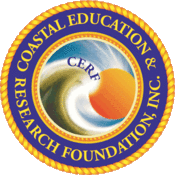Health Risk Assessment of Polycyclic Aromatic Hydrocarbons (PAHs) in Biota from Remediated Crude Oil-Polluted Sites in the Niger Delta, Nigeria
ABSTRACT
Udi, E.O.; Numbere, A.O., and Zabbey, N., 0000. Health risk assessment of polycyclic aromatic hydrocarbons (PAHs) in biota from remediated crude oil-polluted sites in the Niger Delta, Nigeria.
Human health risk assessment of polycyclic aromatic hydrocarbons (PAHs) in crab, periwinkle, and mangrove leaf from polluted and unremediated oil-polluted creeks in Gokana, Nigeria was carried out between April 2023 and January 2024. Samples were collected and taken to the laboratory, prepared, and analyzed for toxic metal content using gas chromatography–mass spectrometry. Results showed PAHs in crab (0.850 ± 0.06 to 2.15 ± 0.16 mg/kg), periwinkle (0.41 ± 0.04 to 1.44 ± 0.16 mg/kg), and mangrove leaf (1.27 ± 0.11 to 5.32 ± 0.52 mg/kg). Most PAHs were of high molecular weight (HMW). Estimated daily intake (EDI) of PAHs for adults and children was below the reference dose across stations and seasons, with higher EDI for low-molecular-weight PAHs compared with HMW PAHs. Benzo[a]pyrene was higher in crab and mangrove leaf and lowest in periwinkle. Concentrations of PAHs in all biota across seasons and stations were all above recommended standards of the World Health Organization/U.S. Environmental Protection Agency (USEPA). The hazard index of crab via ingestion route (HIi) for adults was below the standard limit of 1 but exceeded the limit in Kozo in the wet and dry seasons for children. In periwinkle the HIi values were below the limit. In mangrove leaf, the HIi values for children exceeded the limit in all stations except one in both seasons. The excess cancer risk (ECR) for adults due to crab, periwinkle, and mangrove leaf were below the USEPA limit of 1 × 10−4. The ECR of PAHs in children for crab and periwinkle were above the acceptable limit of the USEPA in Goi (unremediated site) and Kozo (newly remediated sites) in both seasons. This result might indicate that remediation intervention requires years to become effective and that caution should be exercised at least for children, even in recently remediated sites.
Contributor Notes

